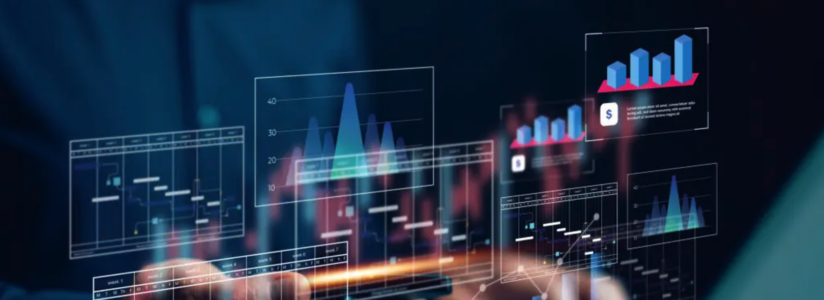Project vs. Workflow Metrics: How KPIs Vary Between Project Management and Work Management

Key Performance Indicators (KPIs) are crucial for evaluating success, yet they serve different purposes in project management and work management. In project management, KPIs are often tied to the completion of specific, time-bound deliverables. Conversely, work management focuses on ongoing processes and workflows, requiring KPIs that track long-term efficiency and operational success.
This article explores the distinct roles of KPIs in project management and work management, providing examples and best practices for aligning metrics with organizational goals.
Project Management KPIs: Measuring Success Against Defined Objectives
Nature of Project KPIs
Project management KPIs are designed to measure performance within the scope of a specific project. These KPIs are:
- Time-Bound: Aligned with the project’s start and end dates.
- Goal-Oriented: Focused on achieving predefined deliverables.
- Tactical: Directly tied to project-specific outcomes.
Examples of Common Project KPIs
- On-Time Delivery
- Measures whether milestones and the final deliverables are completed as per the project timeline.
- Example: “Project delivered 2 days ahead of schedule.”
- Budget Variance
- Tracks whether the project stays within the approved budget.
- Example: “Final cost is 5% under budget.”
- Scope Changes
- Monitors how often the project scope changes due to unforeseen requirements.
- Example: “Three additional features were added during development, extending the timeline by two weeks.”
- Stakeholder Satisfaction
- Gauges the satisfaction of stakeholders, such as clients or sponsors, with the project outcomes.
- Example: “Stakeholders rated their satisfaction at 4.8/5 in the post-project survey.”
- Resource Utilization
- Measures how effectively project resources (people, equipment, etc.) are used.
- Example: “Resource utilization efficiency was at 85% during the execution phase.”
Work Management KPIs: Ensuring Long-Term Efficiency and Optimization
Nature of Workflow KPIs
Work management KPIs focus on the performance of ongoing processes and workflows, emphasizing continuous improvement. These KPIs are:
- Continuous: Evaluated on a recurring basis.
- Process-Oriented: Designed to optimize day-to-day operations.
- Strategic: Aligned with broader organizational goals.
Examples of Common Workflow KPIs
- Cycle Time
- Measures how long it takes to complete a recurring task or workflow.
- Example: “The average cycle time for processing invoices is 2.3 days.”
- Throughput
- Tracks the volume of work completed within a specific time frame.
- Example: “Customer support resolved 150 tickets last week.”
- Error Rate
- Measures the frequency of errors in a process or workflow.
- Example: “Error rate in data entry reduced from 5% to 2%.”
- Employee Productivity
- Assesses how effectively employees contribute to workflow goals.
- Example: “Each team member completed an average of 25 tasks per day.”
- Process Efficiency
- Evaluates the ratio of value-added time to total time spent on a process.
- Example: “75% of the time in the workflow is value-added.”
Key Differences Between Project and Workflow KPIs
| Aspect | Project Management KPIs | Work Management KPIs |
|---|---|---|
| Focus | Specific project outcomes | Ongoing process and workflow efficiency |
| Timeframe | Temporary, project-specific | Continuous, long-term |
| Measurement Scope | Tactical and deliverable-oriented | Strategic and process-oriented |
| Stakeholder | Project sponsors, clients, and team | Employees, managers, and cross-departmental teams |
| Evaluation Frequency | At milestones or project completion | Recurring, often weekly or monthly |
Bridging the Gap Between Project and Workflow KPIs
While project and workflow KPIs are distinct, they are interconnected. Projects often introduce changes that impact workflows, and workflows form the foundation upon which projects are built. Organizations can achieve better results by integrating insights from both types of metrics.
1. Aligning Project Goals with Workflow Processes
- Example: A software development project may track on-time delivery as a KPI, but it should also monitor how efficiently workflows like code reviews and QA testing are executed.
2. Using Project Data to Improve Workflows
- Example: Lessons learned from a project about bottlenecks in resource allocation can lead to optimized workflows for better resource management in the future.
3. Leveraging Workflow KPIs to Accelerate Projects
- Example: By analyzing cycle times in an ongoing workflow, teams can set realistic deadlines for similar tasks in future projects.
Best Practices for Using KPIs Effectively
For Project Management KPIs
- Define Clear Objectives
- Ensure KPIs are directly tied to the project’s goals.
- Example: Instead of a vague KPI like “Improve communication,” use “Decrease response time between team members by 20%.”
- Use Milestones for Continuous Tracking
- Break the project into phases and evaluate KPIs at each milestone.
- Engage Stakeholders in KPI Definition
- Collaborate with stakeholders to identify metrics that reflect their expectations.
For Workflow KPIs
- Focus on Long-Term Trends
- Avoid overreacting to short-term fluctuations; instead, monitor patterns over time.
- Regularly Review and Adjust KPIs
- Ensure KPIs remain relevant as workflows evolve.
- Incorporate Employee Feedback
- Involve the team in refining KPIs to ensure they’re practical and motivating.
Conclusion
Project management KPIs and workflow KPIs serve different but complementary purposes. Project KPIs help teams stay on track to deliver specific objectives, while workflow KPIs ensure sustained efficiency and improvement in daily operations.
By understanding how these metrics differ and how they interconnect, organizations can create a balanced approach to performance management—achieving both the precision of project execution and the resilience of optimized workflows.






